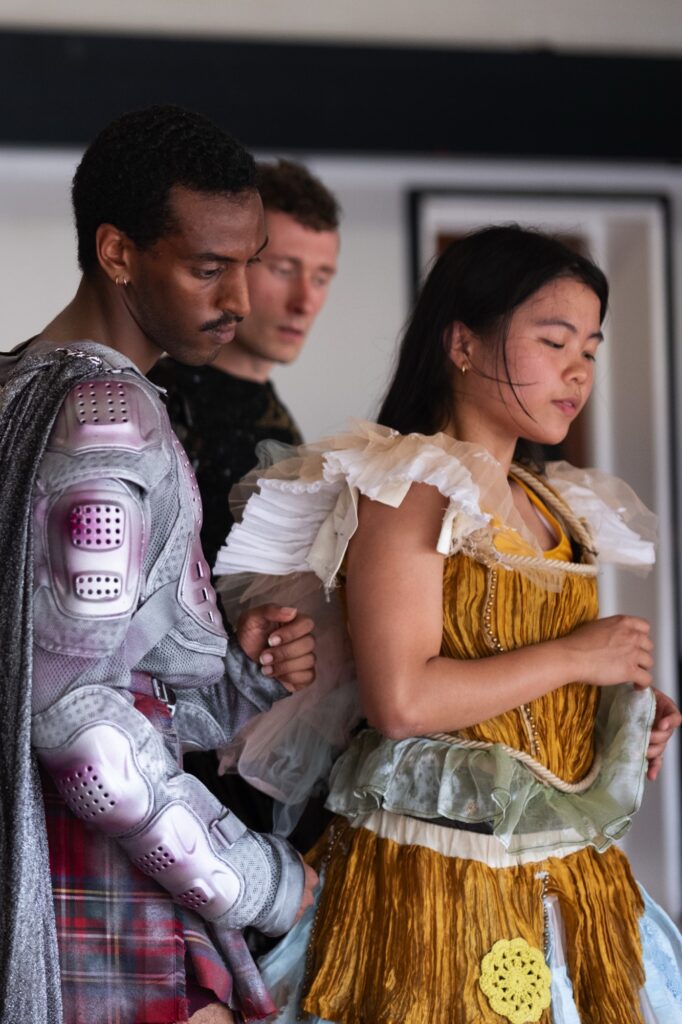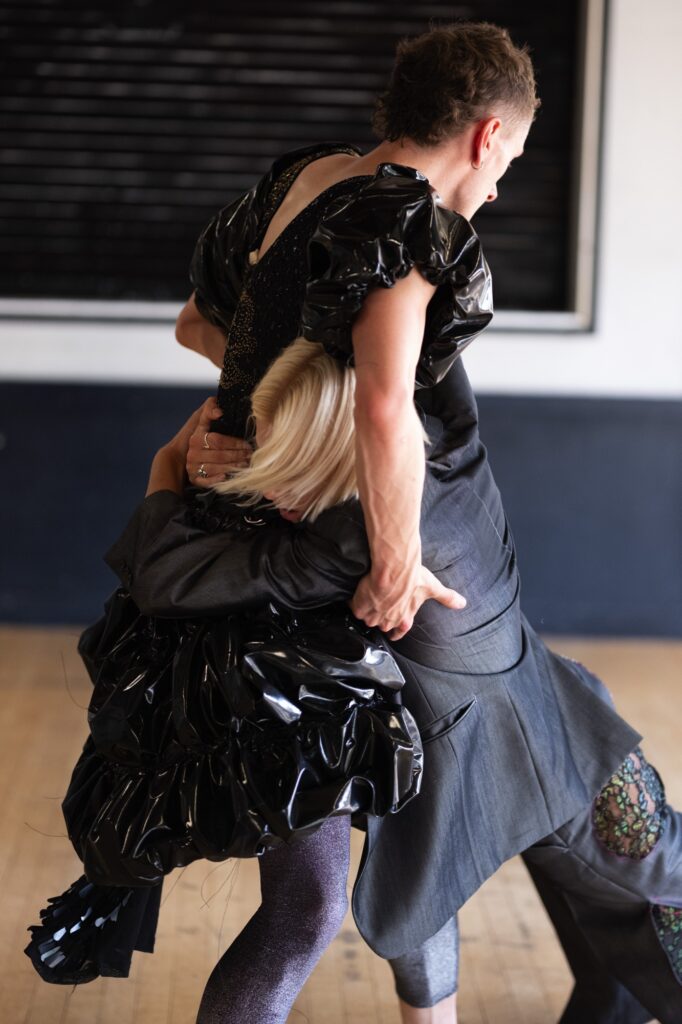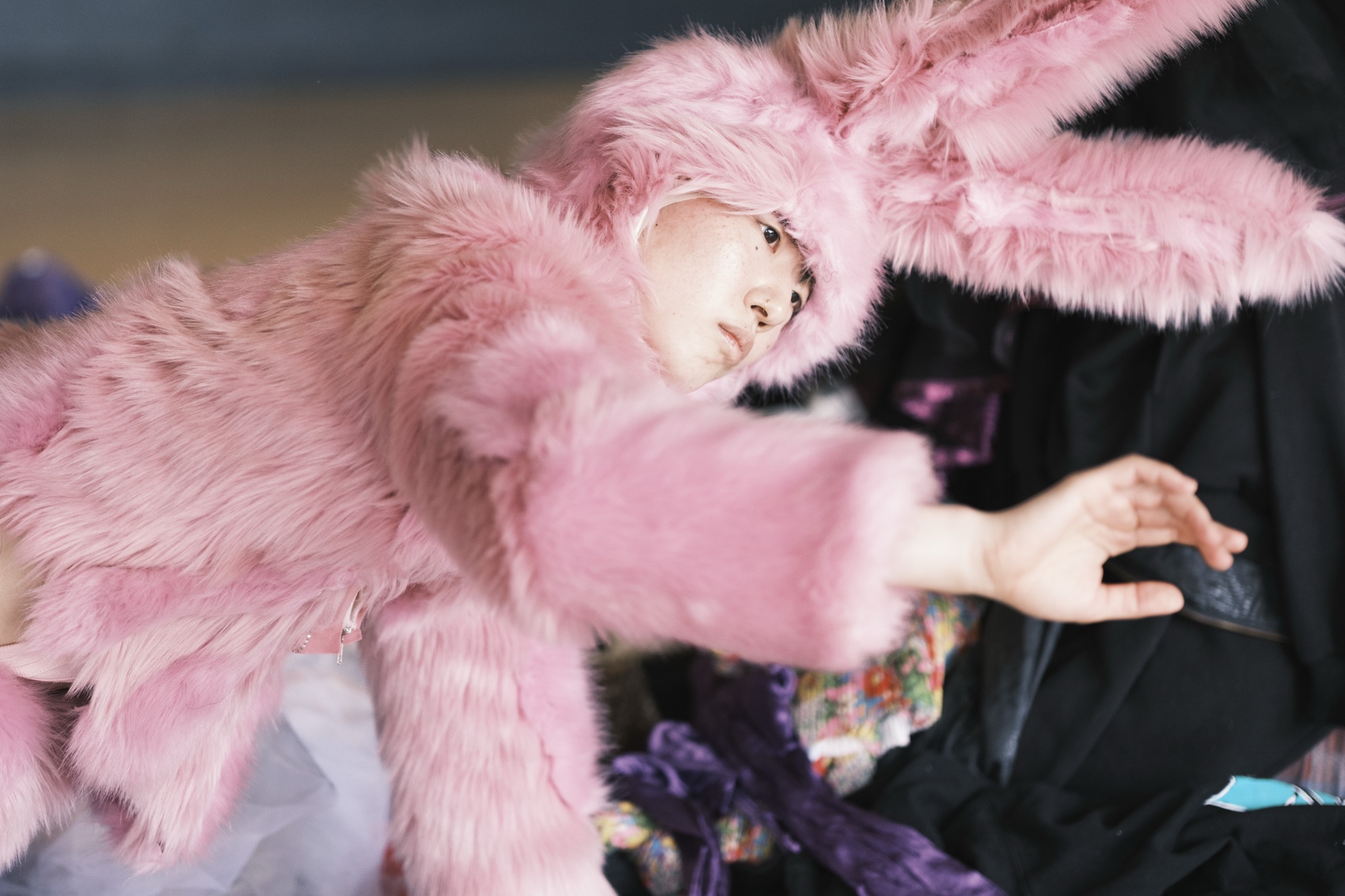Words by Isabela Palancean.
A kaleidoscopic floor covered in multicoloured, multitextured garments. Strange mounds protruding from underneath. A fluffy pink bunny rabbit suddenly emerging from the hallway, as if by magic.
Where are we? Theoretically, we should be inside the Rose Lippman building, which used to once house the Hackney Archives and local library, and has since been repurposed as a vibrant space for creative projects. Yet, something doesn’t quite fit. There is a felt sense that we have left the theoretical or rational realm behind, stepping instead into a fantasy world, populated by a host of enigmatic characters imbued with the uncanny.
QUEER’D is Dynamicaa/Miles Kearley’s latest dance/theatre production, which first began as a solo experiment inspired by the experience of not quite ‘fitting in’. The title itself – a play on the phonetic similarity between ‘weird’ and ‘queer’d’ – calls out long-standing associations with ‘abnormality’ or unease, while the unconventional, past tense spelling unsettles and interrogates such seemingly fixed preconceptions.
The performance unfolds as a ‘dream within a dream’ – layers are peeled off to reveal yet more complicated layers. As a witness, you are not quite sure where one scene begins and another ends. Characters appear, disappear and reappear again. While this constant flux may induce a faint feeling of disorientation, it also creates the impression that anything is possible – an impression heightened by a hybrid choreography combining fluid contemporary movement, sharp theatrical gestures, and moments of improvisational play.
As the audience is taken on this Alice in Wonderland journey into the unknown, the characters featuring Bunny (Sari Mizoe), Nymph (Kynda Ng), Pan (Miles Kearley), Cyborg(Natnael Dawit), Queen (Benji Knapper) and CEO (Delilah Grocott Cain) seem to follow their own journey of self-discovery.



Guided by Quentin Lachapèle’s atmospheric score, as layered and textural as the stage itself, the characters take shape not only in conversation with their surroundings and one another, but also with their embodied selves. What pain hides behind power, what anger lies beneath a sheen of ethereality, what desire to be loved is buried under a steel-cold armour? From outward extensions to inward collapses and sweeping floorwork, the dancers are able to shift through various emotional, physical and mental states, resisting socially prescribed notions of identity, whether heteronormative or queer. One particularly striking scene showed the ‘CEO’ turning toward ‘Pan’ in surrender, allowing their full weight to be held by, and move in sync with Pan’s. Another scene had Nymph drifting dreamily through the pieces of clothing on the floor to suddenly sweeping them aside, creating a blank space in the middle as a result.
Kearley and his collaborators have extensively integrated dreamwork in the development of QUEER’D, both as a conceptual and choreographic tool.
In an interview over Zoom, Kearley explained that, by inviting dancers to share their personal dreams, it was possible to create a non-judgemental, safe space. Dreams serve as key portals into hidden, or repressed aspects of existence, therefore the act of collective sharing can, on the one hand, offer relief from the pressure to be ‘normal’, and on the other, tap into universally human experiences. Kearley also found it especially important to work with a psychotherapist onsite in order to ensure everyone’s wellbeing in the process, while at the same time encourage openness and personal growth.
“QUEER’D is a wonderland of expression – a harvest of the collective subconscious that weaves together aspects of self that feel deeply honest, defiantly weird and overwhelmingly joyful. The focus on spontaneity, intuition, wellbeing and collaboration within the creative process has been deeply moving. I feel immense pride in this work, what it has meant to bring it to life and the knowledge that it was meaningful to those who witnessed it” – Miles Kearley.
In a society obsessed with labelling and categorisation, QUEER’D, through its blurring of boundaries – male-female, individual-collective, human-animal – provides a powerful antidote. Despite not being able to remember it as a fully coherent plot [which it never tries to be], the performance left me with a profound feeling of wonder, as if having caught a glimpse of something beyond the sheen of immediate reality, yet something that has always been there.
